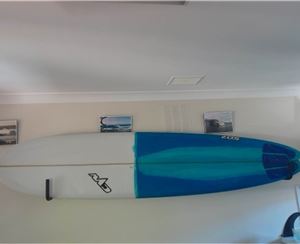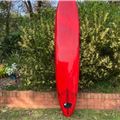Gnaraloo Station withdraws support for Pro Surf event
Gnaraloo Station has withdrawn its support for the proposed Rip Curl Pro Search ASP World Championship Tour surfing event at the famed 'Tombstones' big wave location at Gnaraloo, on the north west coast of Western Australia.
Paul Richardson of Gnaraloo today said that he had informed Rip Curl and Eventscorp, the events arm of the Western Australian Government, of the Station's decision.
"Gnaraloo Station is not prepared to proceed with the event. Unfortunately, Rip Curl was not prepared to make the full level of investment required for a comprehensive and credible Environmental Impact Assessment (EIA) study to adequately identify, address and manage the potential environmental and social impacts of staging the event at Gnaraloo," Paul Richardson said.
"Such an event cannot be undertaken without a preparedness to invest in adequate assessment and protection of the sensitive environmental resources at Gnaraloo. This requires inclusive consultation, comprehensive event planning and responsible environmental protection. This could be demonstrated by a thorough, credible and fully funded EIA".
"I still strongly support the staging of international level events at Gnaraloo but only on a sustainable basis."
Rip Curl informed Mr Richardson late in November 2007 that Tombstones had been selected as a preferred site to stage a Pro Search event during 2008.
The Gnaraloo team quickly identified and requested that an EIA study be undertaken of the proposed event. Rip Curl agreed initially to make a commitment to some funding for work on the EIA.
Gnaraloo Station is unique as one of the only non-mining owned pastoral stations in Australia with a fulltime senior environmental scientist, Ms Karen Hattingh, on staff since 2005 when Mr Richardson took over the Station. The Station's in-house expertise was therefore considered best equipped to develop the EIA because of the team's sitespecific knowledge, intensive site work over a number of years and understanding of the local context and regional perspective.
However, during November 2008, when the draft EIA was complete and ready for review before being released for public comment, Rip Curl stated its unwillingness to make the required full financial investment needed to complete the study to the standard, scope and detail required.
Paul Richardson said that as a result, the draft EIA would not be released to any parties and would remain the property of Gnaraloo Station, given its considerable investment of the required resources into its development.
"Properly planned and implemented, I always believed the proposed ASP Tour event at Gnaraloo would have been beneficial for the Gascoyne Region and for Western Australia. So I am disappointed with how this has turned out." Mr Richardson said that despite this, his team would continue to focus on the ongoing protection and sensitive development of Gnaraloo.
Endangered sea turtle program and Infrastructure Developments In another important development, Gnaraloo Station secured an Australian Government grant in 2008 to launch its ongoing Gnaraloo Marine Turtle Survival Program to support the conservation of endangered and vulnerable turtles at Gnaraloo. The program is jointly managed with the Department of Environment and Conservation (DEC). "This is a local environmental issue at Gnaraloo of international conservation significance," Karen Hattingh said.
Applications were received from all over the world to join the Gnaraloo Turtle Tracker Team 2008/09 and participate with the Station's turtle beach monitoring program. During November 2008, Gnaraloo Station recruited two Australian marine science graduates from Perth's Murdoch University to undertake the daily turtle track monitoring under the guidance of Ms Hattingh. The season-end results of the program will be provided to DEC for inclusion in its databases on Ningaloo turtles.
Gnaraloo Station also secured contributory grants during 2007/08 from the State and Australian Governments for its proposed upgrade of the Gnaraloo Airstrip to allow the Royal Flying Doctor Service (RFDS) to access the area on a 24/7 emergency basis. Gnaraloo Station will make financial and in-kind contributions to the works.
"Depending on the condition of the unsealed road from time to time, it is a three hour trip from Carnarvon to Gnaraloo," Paul Richardson said. "The RFDS was unable to access Gnaraloo on a number of occasions since 2006 due to seasonal weather events such as cyclones, flooding or heavy rain making the road impassable. This latest development will be reassuring news for all visitors to the Gnaraloo coastline."











